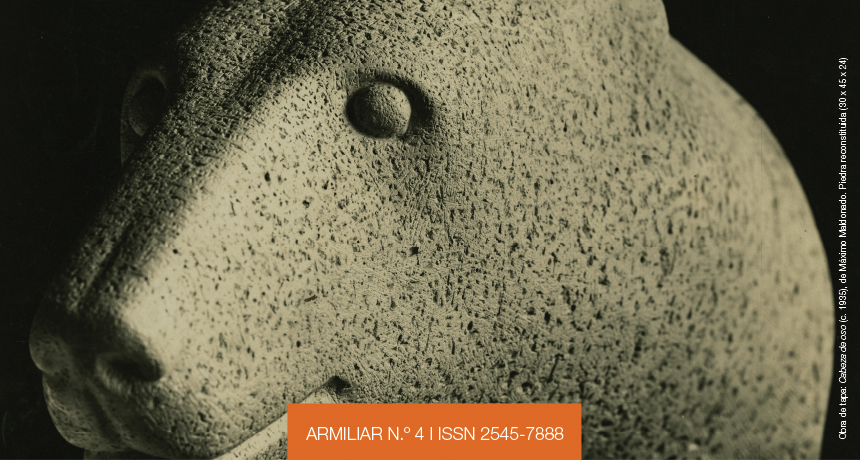History of Latin American Art. Contributions to Think about its Future
DOI:
https://doi.org/10.24215/25457888e029Keywords:
Aby Warburg, latin American art, survival, anachronism, heterochronyAbstract
This paper will analyze the Nachleben concept developed by Aby Warburg to analyze survivals and reflect on those forms that are resignified in the present. This category of Warburgian thought allows us to address some of the problems that emerge from the study of the history of Latin American and contemporary art, which involves adopting anachronistic theoretical positions and rethinking the distribution of center-periphery roles in the construction of aesthetic theories in Latin America.Downloads
References
Didi-Huberman, G. (2002). La imagen superviviente. Historia del arte y tiempo de los fantasmas según Aby Warburg. Madrid, España: Abada Editores.
Didi-Huberman, G. (2015). Ante el tiempo. Historia del arte y anacronismo de las imágenes. Ciudad Autónoma de Buenos Aires, Argentina: Adriana Hidalgo editora.
Escobar, T. (2007). Chaco paraguayo: sobrevivencia y sobrevida. Asunción, Paraguay: Fotosíntesis.
Moxey, K. (2016). El tiempo de lo Visual. La imagen en la historia. Ciudad Autónoma de Buenos Aires, Argentina: Sans Solei.
Ruvituso, F. L. (2013). Aby Warburg y la imagen como fuente Aproximaciones acerca de los conceptos de memoria, montaje y supervivencia. Ponencia presentada en las 9.º Jornadas Nacionales de Investigación en Arte en Argentina. Facultad de Artes de la Universidad Nacional de La Plata, La Plata, Argentina. Recuperado de http://sedici.unlp.edu.ar/handle/10915/42502
Ruvituso, F. L. (2019). Tensiones y supervivencias. Apuntes sobre la iconología de Aby Warburg. En R. A. Hitz, F. L. Ruvituso y J. C. Pedroni (Coords.), Historiografías del arte. Debates y perspectivas teóricas (pp. 78-108). Recuperado de http://sedici.unlp.edu.ar/handle/10915/86724
Warburg, A. (1992). Arte italiano y astrología internacional en el palacio Schifanoia de Ferrara. En A. Warburg y otros Historia de las imágenes e historia de las ideas. Ciudad Autónoma de Buenos Aires, Argentina: Centro Editor de América Latina.
Winckelmann, J. [1764] (2011). Historia del arte de la Antigüedad. Madrid, España: Akal.
Downloads
Published
How to Cite
Issue
Section
License
Current policy since 2019
The acceptance of the manuscript by the magazine means the non-exclusive cession of the property rights of the authors in favour of the editor, who allows the reuse, after publication (post print), under a license Attribution-NonCommercial-ShareAlikes 4.0 International (BY-NC-SA 4.0).
According to these terms, the material can be copied and redistributed by any means or in any format as long as a) the author and original source of the publication are quoted (magazine and URL of the work), access to the license is provided and whether changes have been made is mentioned; and b) the material is not used for commercial purposes.
The cession of non-exclusive rights means that after the publication (post print) in Armiliar the authors can publish their work in any language, means and format; in such cases it must be mentioned that the material was originally published in this magazine. Such cession also means the authorization of the authors for the work to be collected by SEDICI, the institutional archive of the Universidad Nacional de La Plata, and to be spread in the databases that the editorial team considers appropriate to increase the visibility of the publication and its authors.
Moreover, the magazine encourages the authors to deposit their productions in other institutional and thematic archives under the principle that offering the society the scientific and academic production without any restrictions contributes to a greater exchange of the global knowledge.



























